To avoid being too hot or too cold: how to calculate the number of sections in an aluminum heating radiator
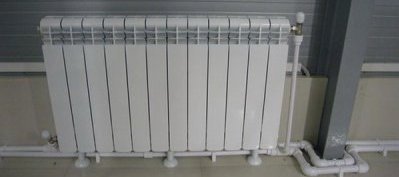
Correct calculation is the key to the successful creation of a heating system.
It is important when using any batteries, but especially aluminum ones.
There are several methods used to calculate the power of a radiator.
Power of one section of aluminum radiator
The parameters stated in the product passport are not always accurately reflected in reality. This is due to many external conditions, interfering with the ideal operation of the device.
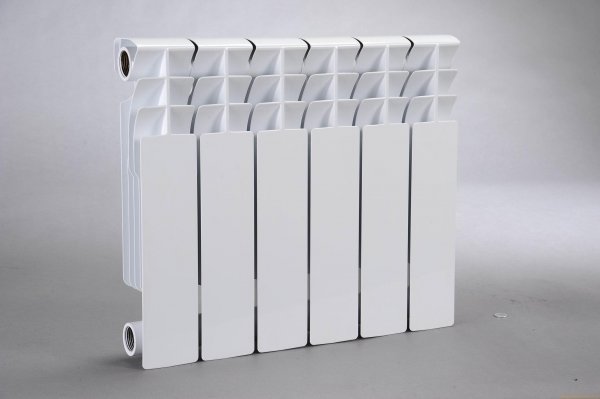
Photo 1. Aluminum heating radiator. The device consists of several sections, the number of which can be changed.
The heat output of aluminum batteries corresponds to the figures stated in the documents if the difference between the air and water temperatures is 70 °C. The calculation is as follows:
(To + Tp) / 2 — TB = 70, where
- To — return temperature.
- Tp - feeds.
- TB — air in the room.
The last value is chosen according to GOST. In most cases it is 22 °CTo determine the heating of the coolant, the formula is expanded:
To = (70 + 22) — 10;
Tp = (70 + 22) + 10.
The difference is 70 true for heat transfer from one section of the radiator 500mm at 200W. When using 350 mm the battery value will be 140 W.
Attention! Both indicators fluctuate within the range 20 W.
Methods of calculating power
To determine the values, 4 formulas are used:
- According to the linear dimensions of the room. To do this, you need to measure its length and width. According to building codes and regulations, for each 10 square meters necessary 1 kW, that's why the area is divided by 10. This option is less accurate because it does not take into account one important factor that is taken into account in the next calculation.
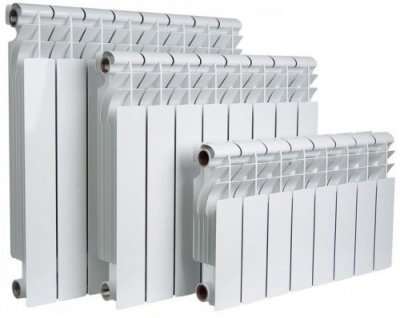
- In full dimensions, for the calculation of which you also need to measure the height of the room. SNiP suggests multiplying the volume of the apartment at 41 W. So, for the premises 60 squares the power is equal to: 60 * 2.7 * 41 = 6642 W.
- By design features. This calculation is similar to the previous one, but takes into account the details:
- for each window add 0.2 kW;
- behind the doors - by 0.1 kW;
- the sum is multiplied by 1.3, when the apartment is in a corner;
- by 1.5 if they are calculating the power for a private house;
- recall the "correction" which depends on the geographical location of the object.
- TOThe complex calculation takes into account the same things as the structural calculation, as well as:
- thickness and material of the insulation;
- what are the floor, walls, and ceiling made of;
- ventilation of the room, if any.
The last calculation method is complicated, but gives the most accurate result. It is recommended to invite a specialist for calculations. He will independently determine the type of pipes and radiators that should be placed in a certain heating system.
Reference. Only after determining the required power, proceed to counting the number of battery sections to ensure stable operation and comfortable conditions.
How to calculate the number of radiator sections based on the area of the room
The average values are presented in the following table.
| Model of aluminum radiator | Heat output, W | Room area, sq. m. (at a height of 2.7 m) | ||||||||||||||||
| 5.5 | 7 | 8.5 | 10 | 13 | 16 | 19 | 21 | 23 | 25 | 27 | 29 | 32 | 35 | 36.5 | 38 | 40 | ||
| Required number of sections | ||||||||||||||||||
| A350 | 150 | 6 | 7 | 8 | 9 | 11 | 12 | 13 | 15 | 16 | 17 | 18 | 19 | 20 | 20 | 21 | 22 | 23 |
| A500 | 185 | 3 | 4 | 5 | 7 | 8 | 8 | 9 | 11 | 12 | 13 | 14 | 15 | 15 | 16 | 17 | 18 | 19 |
When using models after the letters L, you must add accordingly parts 3 and 2 to similar values in the table.
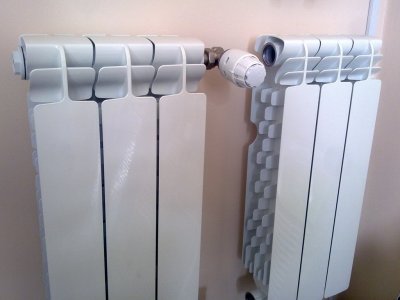
The calculation principle is based on a simple formula:
K = Q/N, where
- Q — total heat output of the heating system.
- N - one section.
For example, when using A500 and the overall power value in 3515 W, the number of sections will be: 3515/185 = 19. Despite the simplicity of the calculation, it is not perfectly accurate. It is advisable to take into account several subtleties:
- The resulting fractional numbers are rounded up: It is better to have excess than deficiency.
- The following remark applies exclusively to private homes.. In the passport of the aluminum radiator, the pressure value is calculated for 70, less often 60 °C, which is indicated in the document. It should be taken into account that the operating temperature will be 20°C higher. The buildings are equipped with a heating system that is not suitable for such values, so the effective heat output must be recalculated. It is recommended to contact a specialist who will take all factors into account.
- In apartment buildings, water is heated to lower temperatures, which is why more sections are required.
- The operating power also depends on the method of connecting the radiator to the piping.. For batteries from 12 parts diagonal is recommended, and for the rest - lateral.
Calculation of the required number of radiator sections — one of the most important steps in preparing for the creation of heatingThis is especially true for multi-apartment buildings, where calculations are carried out for each room separately.
Features of calculation in a private house
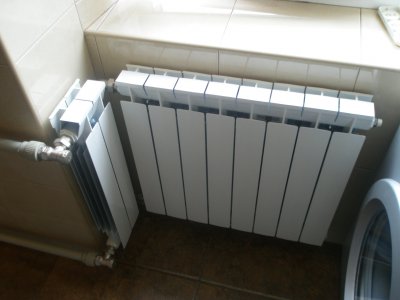
Consists of taking into account various factors that cause heat loss. It is not enough to simply calculate the power of the heater, radiators, pipe size and other indicators, You also need to consider:
- Method of mounting the device to the systemThe efficiency of a two-pipe system is:
- 98% with diagonal;
- 87% at the side;
- 80% with bottom connection.
- The efficiency of single-pipe heating is 80%, sometimes less.
- The region of residence determines the power, which needs to be developed in late autumn, winter and early spring. The further north, the higher the indicator.
- The radiator calculation must include losses., which are formed due to the presence of certain devices:
- up to 1000 liters of water goes through the chimney 10% heat;
- an unheated attic loses up to 20%, and the basement is 10%;
- walls and windows can release a total of up to 30% power.
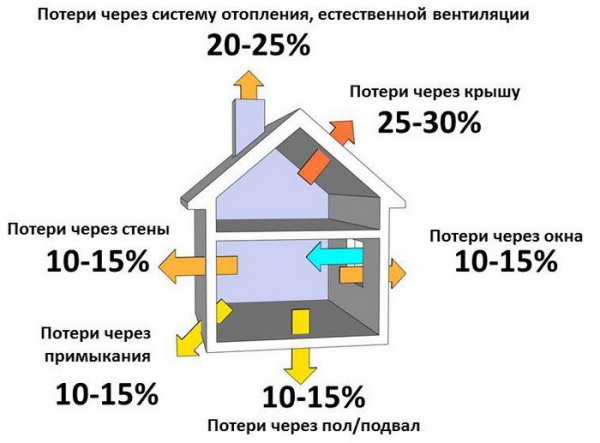
Photo 2. Heat loss in a private house through different parts of the building. Heat loss must be taken into account when installing radiators.
Values can be reduced, if you perform several actions concerning the walls, floor and ceiling:
- When windows face north, their losses are 10% greater., in comparison with others.
- The location of the radiator relative to the cardinal points does not affect the power, but If they are basking in the sun, they cool down a little more slowly.
- The number of sections should be increased after calculations based on passport data, since the actual power of the products is lower. This is due not only to the losses described above, but also to a slight overestimation of the indicators by the manufacturer.
Only by taking into account all factors, it will be possible to create and install a high-quality harness with aluminum radiators. Calculations will help to accurately calculate the sufficient number of battery sections, take into account all losses.
Important! When using additional devices, it is possible to increase the required power. If you turn on the thermostat, you need to increase the indicator by 20-25%, since the device will be able to manually control the heating.
Useful video
Watch the video, which explains how to calculate the power of heating batteries.
Conclusion
Careful calculation will help to avoid various problems.If you have any doubts about the correctness, you should invite a specialist.






